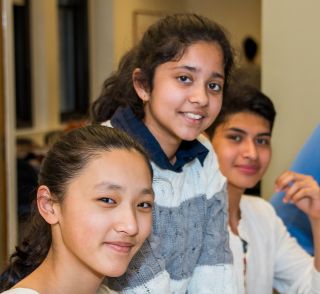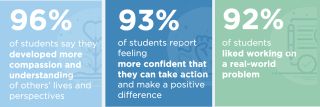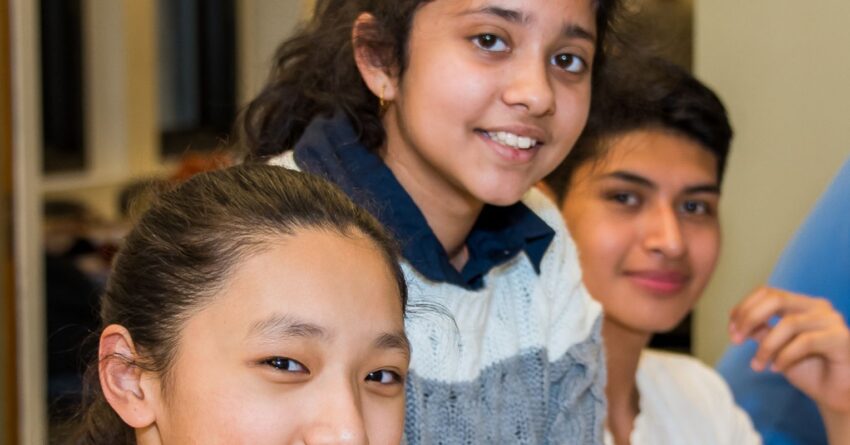
It’s been widely reported in the news that depression, anxiety, and suicidality among youth are on the rise. As a humane educator who teaches about the interconnected issues of human rights, environmental sustainability, and animal protection, I’ve personally seen anxiety deepen among youth during the almost 40 years that I’ve been teaching.
When I began my work as a humane educator, and during the ensuing 20-plus years, by and large young people were upset about the problems they learned about, but they almost all believed these problems could be solved. In 2012, before the COVID pandemic, before wildfires were regularly destroying forests and communities across the globe, before hard-won rights were being rolled back, and before polarization had become so extreme it seemed we could barely come together to solve much of anything, I was invited to speak at a middle school in Connecticut. I asked the fifth- and sixth-graders to tell me what they thought were the biggest problems in the world, and I wrote down what they said on a whiteboard until the board was completely full. Then, I asked the students to raise their hands if they thought we could solve the problems they listed. Of the 45 children, only five raised their hands.
This was the most sobering moment in my then almost 35-year career as an educator, and things have only gotten worse since then.
I knew I had to do something to restore their hope, so I asked the students to close their eyes and imagine themselves sitting on a park bench on a beautiful day at the end of a long and well-lived life. I painted a picture of the scene: The air and waterways around them were clean. The birds were singing. Species were recovering from the brink of extinction. There hadn’t been a war in more years than they could remember. No one went to bed hungry. We had learned to treat each other and other animals with compassion.
Then, I asked them to imagine a child coming up to them and joining them on the park bench. I told them that the child had been studying history in school and had been learning about darker times, times they themselves had lived through. The child had all sorts of questions about how things had gotten so much better. Then I asked them to imagine the child asking this final question:
“What role did you play in helping to bring about this better world?”
I let them respond to the child in their mind before asking them—with their eyes still closed—to raise their hands if now they could imagine us solving the problems they listed on the whiteboard. This time, 40 hands went up in the air. Envisioning a peaceful, healthy world and knowing that they and the other children in the room would have a role in creating such a future was enough to restore their hope.
A few years later, I was in Guadalajara, Mexico, to speak at a conference. The day before the conference began, I visited the school hosting the event. When I arrived, I was invited to talk to some of the fifth-graders. Remembering the time I’d spoken to the fifth- and sixth-graders in Connecticut, I asked these children to raise their hands if they thought we could solve the problems in the world. This time, every hand flew up in the air.
What was different? Their teacher had been teaching them, in age-appropriate ways, about environmental problems, and they had been addressing them. They knew problems could be solved because they were solving them.
We need to act to move from despair to hope. Singer-songwriter Joan Baez said as much in her famous quote: “Action is the antidote to despair.”
Oberlin College and Conservatory Professor David Orr put it another way: “Hope is a verb with its sleeves rolled up.”
With that said, not all actions are equal, either in their effectiveness in solving problems or in their ability to transform anxiety into a sense of efficacy. Actions that foment division and rage tend not to be either strategic at solving problems or particularly hope-inducing. Solutionary actions, however, which require that we conduct careful research, connect with a range of stakeholders, and collaborate to find solutions that do the most good and least harm for everyone (people, animals, and the environment), are not only more likely to be adopted (which is hope-inducing in and of itself) but also to build community and camaraderie, which diminishes anxiety and despair.

Institute for Humane Education
Teachers who adopt this “solutionary” framework rave about it, as do their students. In one survey of teens who participated in solutionary projects in several countries, 96% of students said they developed more compassion and understanding of others’ lives and perspectives, and 93% reported feeling more confident that they can take action and make a positive difference. These results suggest that learning how to be “solutionaries” is a powerful way not only to provide meaningful educational experiences and prepare young people to contribute positively to their communities, nations, and world but also to stave off hopelessness and reduce anxiety.
Education Essential Reads
There are many good ideas about what we should do in our homes and our schools to address anxiety among young people. These include banning phones in schools, delaying the age at which we allow our children to be on social media, and giving young people opportunities to be together in person rather than spend hours alone on devices. Let’s not stop there, however. Young people are anxious about their world and their futures. We need to give them the chance to make a positive difference collaboratively. For the sake of our children and the world, we need to educate them to be solutionaries.
